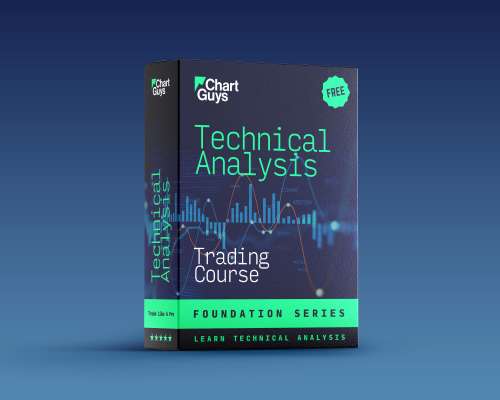Technical Analysis On Yourself
The underlying mechanism of technical analysis is pattern recognition. All the common sayings, “sell when you feel euphoric”, “buy when there’s blood in the streets” are sayings because of the patterns that often occur in the markets. When things look the worst they tend to have a relief bounce, when everyone is talking about it we tend to set a top. Tight ranges, flags, moving averages all depend on recognizing patterns and taking advantage of history both rhyming and repeating.
Traders spend hours and hours of time studying the markets; analyzing patterns, searching through news, looking at option chains, learning varying trade setups and strategies. However, oftentimes the part they brush off is in developing the data necessary to chart their own journey.
Charts and moving averages are all created by aggregating data, enough price action and we have a chart, a long enough chart and we get patterns. The same goes for defining our style of trading, and mapping how to break out our P&L.
What to journal?
Just like indicators and setups, journaling can often be time consuming and overwhelming if you are not journaling with a purpose. Just as we come into the charts with intent, to search for setups, to learn, to follow price action, we must approach our journaling with intent. The purpose of journaling is not to just write out our trades or every thing that comes to mind. It’s to take thoughts out of our head, organize them, and then analyze them so we can take action on them to improve our lives and our trading.
Ask yourself what you are trying to accomplish with your journaling. Just tracking P&L doesn’t track your risk reward, your types of setups, your edge management. Just writing out your thoughts on a day doesn’t take into account how you slept, your life circumstances or the market environment. What are you wanting to improve upon? Be specific.
Examples of things you can journal for the purpose of analyzing:
- Type of setup: high compression squeezes, trend change setups, ema crosses, backburners. Recording the type of setup when you journal allows you to run a win rate, and risk rate on the types of setups you choose. If you have a 60% win rate with backburners and over a 1:2 risk reward ratio, but only a 40% win rate with trend changes, perhaps your resources are better focussed on back burners.
- Risk vs. Reward: A lot of people will enter trades without focussing on the exit strategy. If you start by journaling the setup, and the overall outcome, you can start to hone in on your stops, where your exits can be and adjusting your risk to reward to make sure the setups are more favorable.
- Routine and mindset: A quick check in on your overall mindset, sleep patterns and ability to focus in on a day with a clear head can help you sort out which days you should trade, and which days you should likely hold off.
- Market conditions: Sideways markets, trending days, FOMC and data days, the conditions of the market can impact the success of your strategies. If you know that on sideways days you only trade well until 11:30, then you can increase the odds of not trading afterwards and giving back potential profit.
Choosing to analyze our actions, and creating data from them is an important part of the trading journey. But doing so with intention on how we can improve ourselves is even more important. Guide your day, your week, your month with the same vigor you look for setups.
Even when you come to journaling with intention, it can be easy to become overwhelmed by the amount of information there is to go through. Often journaling can take on a life of its own, become extremely time consuming and end up being more of a burden then a help. So in addition to focusing on what to journal, it’s important to also learn how to journal.
Tips for how to journal effectively
Don’t take too much time reflecting and wallowing. The process should be streamlined so you can go through and analyze the date, not become a time burden and an excuse to just wallow. Set up the things you want to figure out by journaling, and then form them into an easy to follow checklist. A few sentences on the day combined with a checklist for each trade organizing it by setup, risk, outcome, market conditions etc is enough to create the data required to analyze.
Reflect. Observe. Analyze. Correct. Most people stop at the first part of journaling, which is to just reflect on the day. The second aspect is to then become an active observer. Go outside your own emotions and ego, and look at the data as you would for a friend or an employer. What advice would you give a friend who showed you the data? How can you analyze the data to create and implement points of action to adjust to what the data has shown?
Just like with indicators, no one size approach fits every trader. Some will do better with heavy data for journaling, some will do better with a fast quick approach. There are several online journaling sites for traders that can analyze hundreds of data points in your trades. For a more guided journaling process into the mind and psychology of a trader, visit thetradeplanner.com for a physical journal created with the unique needs of traders in mind.
Ultimately, trading is a means to an end, with the goal of improving your bottom line. Whether you are wanting to trade as a full time career, to better manage your investments or for some extra side income, analyzing what is working, cutting out what is not, and finding your edge as a trader can set you up for the success you seek.












